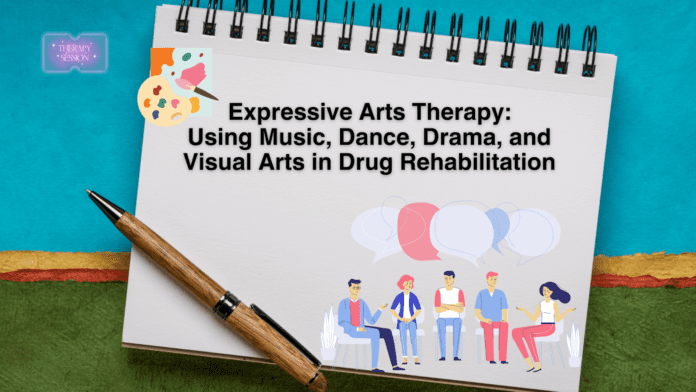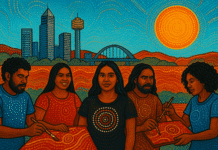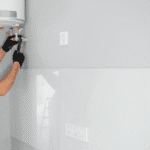Last Updated on August 10, 2024 by Nasir Hanif
Table of Contents
Introduction
When it comes to recovering from substance abuse and addiction, sometimes just talking it out isn’t quite enough. The path to true healing often requires tapping into deeper emotions and forms of self-expression. That’s where expressive arts therapy comes in. This innovative approach harnesses the incredible power of creativity to facilitate personal growth, self-discovery, and overcoming past traumas. It’s all about using art as a therapeutic force.
Expressive arts therapy blends traditional psychotherapy with multiple artistic outlets like music, dance, drama, and painting – as you name it. The idea is to provide a safe, judgment-free space for people to explore their innermost thoughts and feelings in ways that go beyond just words.
Rather than always trying to express art so that people channel their emotions through diverse creative outlets. It’s an incredibly freeing and insightful experience for those struggling to work through complex issues around their substance abuse and addictions. Whether sculpting, acting out scenes or getting lost in colors on a canvas, this artistic approach just seems to crack open a door for emotional release and self-understanding that talk therapy alone can’t always access.
Understanding EAT: A Tapestry of Creative Healing
Expressive art therapy is more than just different techniques on their own. It’s an integrative framework where different types of arts fit together. Each of the art styles is like attaching a piece of string to a colorful blanket. Together, they help people to feel better on their journey.
Types of Expressive Arts Therapy
In the realm of expressive arts therapy, various methods offer individuals unique ways to explore and process emotions, thoughts, and experiences. Some common types of therapy include:
- Art Therapy: Using visual arts such as drawing, painting, and sculpting to convey their emotions and experiences.
- Dance Therapy: Combining movement and dance to cope with anxiety, stress, and depression.
- Music Therapy: By using the power of music, whether through listening or creating to improve mood and reduce anxiety.
- Writing Therapy: Exploring thoughts and emotions through written expression including journaling, poetry, and storytelling.
These methods have no separate entities, instead, they are interconnected paths toward healing, growing together to create an immersive therapeutic experience.
The Healing Power of Artistic Experiences
At the heart of Expressive Arts Therapy lies the transformative power of the artistic process itself. EAT recognizes that the act of creation, self-expression, and artistic exploration holds profound healing potential, transcending the boundaries of traditional therapeutic approaches.
For individuals seeking rehabilitation services in Columbus, the state offers a range of reputable rehab centers dedicated to helping individuals overcome substance abuse and addiction. With its vibrant community and access to quality healthcare, Columbus is home to several facilities specializing in addiction treatment and recovery support. For those seeking a holistic approach to recovery, rehab centers in Columbus Ohio offer Expressive Arts Therapy programs that integrate various artistic modalities into the treatment process.
By combining diverse artistic modalities, EAT creates a tapestry of healing that celebrates the power of creative expression. By getting involved in art, people can learn more about themselves, deal with their feelings, and eventually, discover ways to heal and grow personally.
EAT in Drug Rehabilitation
Emotional Expression and Release
Substance abuse often leaves individuals emotionally scarred and unable to articulate their feelings effectively. EAT offers a safe space like a dance floor, a blank canvas, or a melody, where people can express their inner struggles through art. A recent study published in the Journal of Substance Abuse Treatment examined the effectiveness of different treatment approaches for individuals struggling with substance use disorders.
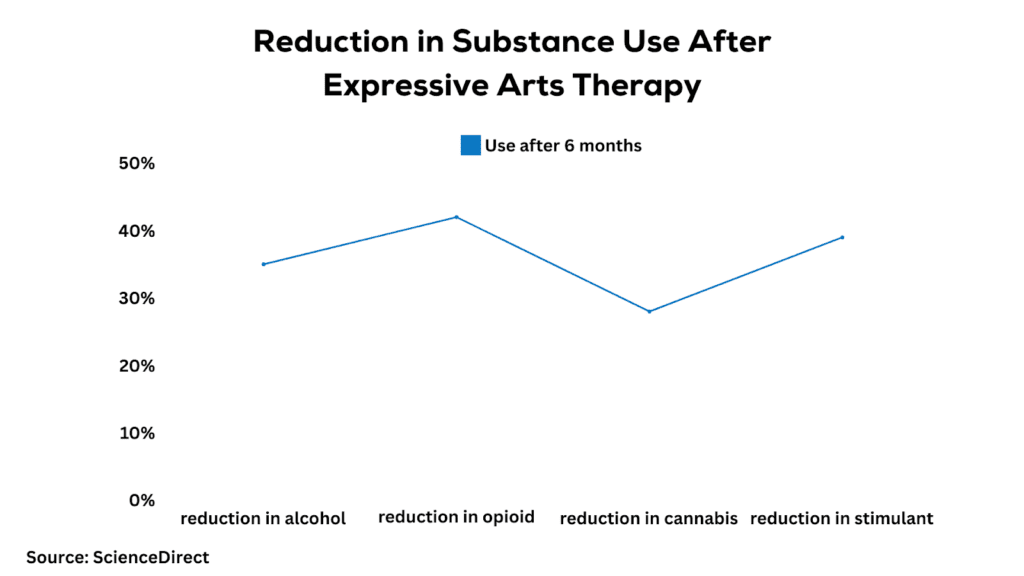
Participants can communicate what words alone cannot convey through dance, music, or visual arts. It’s a cathartic release, a dance of liberation, where emotions find their rhythm and colors find their canvas.
Rebuilding Identity and Self-Concept
Addiction can erode self-worth and distort one’s sense of identity. EAT becomes a stage where participants can rediscover their authentic selves through various artistic modalities.
Drama therapy and role-playing allow for the exploration of different personas, fostering self-awareness and self-acceptance. Visual arts provide a canvas for self-representation and self-reflection, enabling individuals to reclaim their narratives and redefine their identities.
Stress Reduction
Music therapy has a profound ability to soothe frayed nerves, reduce anxiety, and promote relaxation. It’s not just about melodies, it’s about reclaiming inner harmony in the face of addiction’s chaos.
Dance therapy releases endorphins which help reduce stress and create a natural feeling of happiness. This replaces the rush people get from substances. Making art becomes a healthy way to cope, using a brush and canvas instead of turning to cravings or bottles.
EAT Techniques: A Closer Look
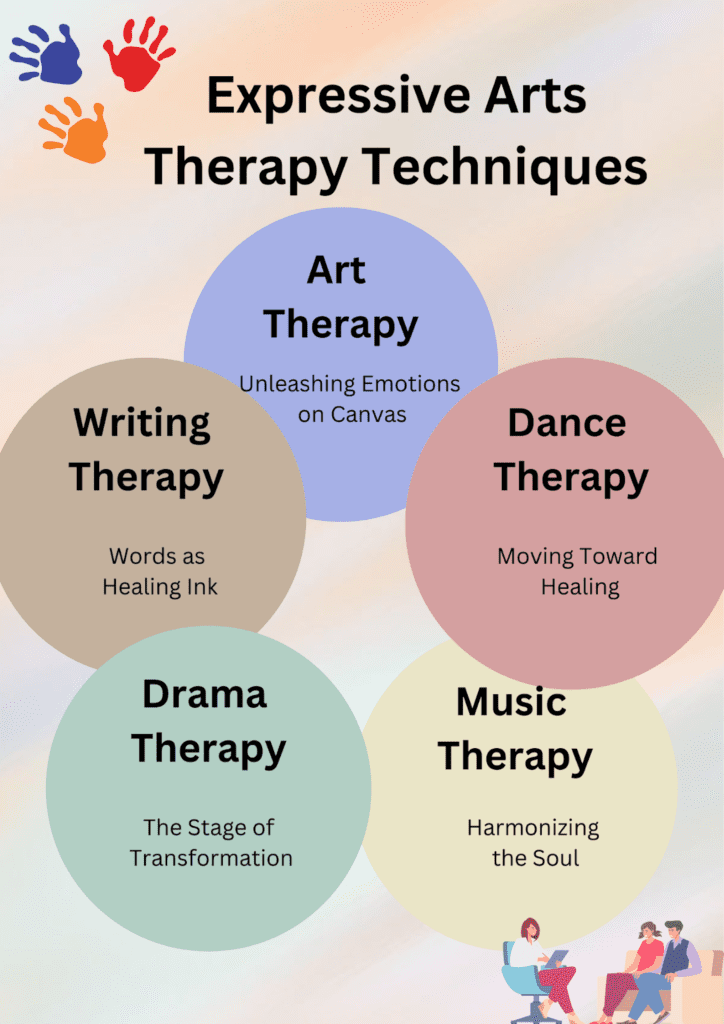
Art Therapy: Unleashing Emotions on Canvas
Art therapy employs visual arts as a powerful tool for emotional exploration. Participants create tangible representations of their inner world, allowing suppressed feelings and experiences to surface in a safe and non-threatening manner.
Through painting, drawing, or sculpting, individuals can unleash their emotions onto the canvas, giving them a physical form that can be processed, understood, and eventually released.
Dance Therapy: Moving Toward Healing
Dance therapy transcends mere physical movement; it becomes a language of expression, a conduit for emotional release. Through dance, individuals can embody their emotions, channeling them into rhythmic movements that facilitate catharsis and self-exploration.
Whether it’s a structured dance class or a free-form movement session, dance therapy invites participants to connect with their bodies, release tension, and find a sense of empowerment and control over their lives.
Music Therapy: Harmonizing the Soul
Music has a universal appeal that touches deep within the human soul. Music therapy utilizes this powerful medium to alleviate anxiety, enhance mood, and foster connection.
Whether listening to soothing melodies or creating their compositions, individuals in drug rehabilitation can find solace and self-expression through music. It’s a harmonious journey that resonates with the heart and mind, offering a reprieve from the dissonance of addiction.
Drama Therapy: The Stage of Transformation
Drama therapy invites participants to step onto a symbolic stage, where they can explore alternate narratives and embody different characters. By enacting scenarios and assuming various roles, individuals gain insights into their struggles, resilience, and potential for growth.
Through this immersive process, participants can confront their past, envision their future, and rehearse new coping strategies in a safe and supportive environment.
Writing Therapy: Words as Healing Ink
Writing therapy unlocks the power of words as a means of self-reflection, self-acceptance, and growth. Whether through journaling, poetry, or storytelling, individuals can articulate their thoughts and emotions in a tangible and enduring form.
The act of putting pen to paper becomes a cathartic exercise, allowing individuals to process their experiences, gain perspective, and ultimately, find their voice amidst the silence of addiction.
Conclusion
Expressive Arts Therapy transcends the boundaries of traditional treatment methods, inviting individuals on a journey of self-discovery and healing through the power of creativity. In the context of drug rehabilitation, EAT becomes a beacon of hope – a colorful palette for transformation, a stage for personal growth, and a harmonious symphony of recovery.
As we embrace the power of artistic expression, let us recognize that recovery is not just about breaking free from substances; it’s about reclaiming one’s soul through art. Whether through dance, painting, music, or drama, EAT offers a pathway to emotional liberation, self-acceptance, and restoring one’s authentic self.
So, let us paint with our emotions, dance with our dreams, and sing the melodies of our resilience. For in the realm of Expressive Arts Therapy, the canvas of healing knows no bounds. If you or someone you know is struggling with substance abuse and seeking a holistic approach to recovery, consider exploring Expressive Arts Therapy programs in your area.
Apart from that if you want to know about “Introduction to Massage Therapy: Benefits and Techniques Explained” then please visit our “Lifestyle” Category.
Frequently Asked Questions
No, EAT is about self-expression, not artistic prowess. Whether you’re a seasoned artist or a complete novice, the canvas awaits. The beauty of EAT lies in its ability to meet individuals where they are, providing a safe and judgment-free space for creative exploration.
EAT enhances traditional approaches by tapping into nonverbal channels of communication and expression. While talk therapy focuses on verbal processing, EAT complements traditional therapy that addresses the mind, body, and spirit. It’s not a replacement for traditional therapy but rather a powerful supplement that amplifies the healing process.
EAT dives beneath the surface, addressing the underlying emotional issues that often contribute to substance abuse. EAT empowers individuals to rewrite their narratives, one brushstroke, dance step, or lyric at a time. Through the creative process, individuals can confront their past, process their emotions, and develop coping mechanisms that foster resilience and long-term recovery.

